How Do You Start A Branded Shopify Store?
There are inevitable questions when you start thinking about selling online and who you are trying to reach with your products. One of those questions is whether or not your brand can transform into a memorable brand that loyal customers want to keep buying from. Even though you have nothing but a business idea or want to elevate your existing brand, it is already what you need to think about for the future strategy.
A brand is more than just a recognizable name and logo in a crowded market. Your brand is how consumers perceive you whenever they interact with your business. You can control impressions - like your social media accounts, websites, and ads, while there are impressions that you can’t control - like customer feedback, news, and recommendations.
Exclusive Offer: Get Shopify 33 days for just $1 + The Online Store Starter Kit
Start your 3-day free trial, and enjoy your first month of Shopify for 1$ plus the premium package designed especially for new Shopify merchants!
You can’t build a brand without consistency and maintain a brand image for every part of the business. But it all starts with establishing how your brand is going to look like and the feeling it wants to evoke in customers. In this article, I will show you why Shopify is the perfect option to build a branded store and a detailed step-by-step guide to start.
Let’s learn to start a branded Shopify store!
Shopify introduction

Shopify is a subscription-based software as a service. It’s cloud-based and hosted on the clouds, too, providing everything you need to set up, grow, and manage an eCommerce business.
Like many eCommerce stores now using the platform to sell their merchandise, Shopify had a humble beginning. We won’t go into too much detail here, but how the platform rose to be one of the most used eCommerce platforms in the world leads to why I recommend it very much.
Shopify co-founder Tobias Lütke couldn’t find an easy way to retail his snowboard products online - even with professional programming experience. He wanted to find a flexible platform with different design options and easily integrate with other services. Instead of wasting time trying existing platforms for him, he and his friend Scott Luke created their own platform.
Nowadays, Shopify has more than 1 million users worldwide from 175 countries. These businesses have made over $200 billion in revenue thanks to using Shopify. Just that alone is pretty convincing, but I show you more reasons to use Shopify in the next section.
Why should you start a branded Shopify store

As one of the biggest eCommerce platforms in the world, Shopify powers over 33% of online stores and is often rated as one of the best platforms to sell online by many prestigious websites. Here are the reasons why many brands want to know how start a Shopify store :
- The platform is incredibly easy to use: Shopify wouldn’t be this big if it wasn’t as easy to use. No need to worry about hosting, server, and development costs. Shopify is incredibly intuitive, so you can set up your own store quickly and affordably.
- It works well with other services: Shopify integrates directly with over 3,200 apps - adding as many features and functionality as you need on selling, marketing, shipping, inventory management, and more.
- Design options: The Shopify theme store offers access to a wide range of professionally designed themes, greatly reducing your website design and starting costs.
- One-stop shop: Shopify really has everything - multiple sales channels, payment provider, storage, dropshipping, and more.
- Unlimited support: available 24/7, Shopify’s support team is available through phone, email, and live chat to keep your store running smoothly.
The key features of Shopify that help you build your brand:
- Profession website design: No customers would remember a poorly-designed website, or for any good reason. By having a good look, your brand can immediately capture visitors’ attention and make them feel good about buying from your business.
- Multiple sales channels: If you have different ways to sell, you also have many opportunities to interact with consumers, making it easier to grow and expand your brand. You can set up an online shop front, sell offline with the Shopify POS app, or easily integrate with other marketplaces like Amazon and eBay to make your brand known more.
- App marketplace: The apps on Shopify App Store are extremely powerful, with a huge collection of free and paid apps that can improve your store’s functionality. The smoother the customer experience is, the more they will remember your brand.
- Payment provider: You don’t want a customer to walk away because he/she can’t pay with a specific payment method, so you can accept credit cards and make your brand known as a good store to do business with.
- Blog: You also interact with customers through content, which is easy to build and connect with people interested in your products or business.
- Pricing: The pricing plan you have will determine your brand’s available features, and you can scale your store the more you grow and expand. Shopify has many options for you to choose from, from $5 for the Starter package to $399 for the Advanced package.
Just by using these key features and having a good brand-building strategy, you can create a well-received branded Shopify store.
How do you start a branded Shopify store
Building your branded Shopify store will essentially boil down to these next steps. It is important that you consider each step and aspect of your brand identity and take note to jot down any sudden ideas. Even if you already have a brand, this list is a good opportunity to reevaluate your brand’s assets.
Let’s start by laying the groundwork for creating a new brand by learning about the target customers and competition.
1. Research the target customers and competitors

Before you start selling your products, you should know whom you are selling to. If you don’t know whom you’re selling to, then even if you build the best brand, that won’t suit the type of person you’re trying to target. Think about it, the way you market products to people aged 60 and over is very different from how you market similar products to people 14-20.
If your Shopify store has matured in terms of sales volume and uptime, you should have a clear idea of your ideal customer and this will help guide your branding experience.
But even if you are just starting out, it is possible to know who you want your customers to be. One of the greatest things about being an eCommerce owner is that you have to decide who your customers should be and then brand your business accordingly. Also, when you are researching about the customers, why not take some time learning about the competitors as well, they can be found by the same methods.
- There are many ways for you to research the target customers and competitors, such as:
- Shop online or offline and get a feel for how your customers browse and buy products.
- Google catalogs your products or services and analyzes direct and indirect competitors that appear.
- Talk to people who belong to your target market and ask them which brands they buy in your space.
- Check out the relevant subreddits of your customers and eavesdrop on their chats and product recommendations.
- Look at the relevant social media pages or accounts that your target audience follows and is receptive to.
If you don’t know how to take notes of the target audience, here are some questions to understand the ideal buyers:
- How old are your target buyers?
- What changes in their lives can they expect from buying your products?
- Are your products a necessity or just nice to have?
- Is your product specifically made for any gender?
- How should your product make the customers feel?
These aren’t the only questions, but they are a great start to get a better idea of who you are targeting. It is the first step to build a better brand. For the competitors, find out who your top-of-mind opponents are, which are the well-established brands and known in the market.
It is important to know this information before moving forward, as you will know who your brand should focus on and how your brand can position itself apart from competitors in a crowded market.
2. Pick your brand’s mission and personality

Your brand can’t be everything to every buyer, especially at the start. So it is important to find your focus and let that guide all the other parts of your brand. Here are some branding exercise questions to get you thinking about the personality of your brand.
Why are you running your brand?
When you think about why you run your business, you’re thinking about why your brand is. There will always be competitors and part of Shopify’s branding for your store includes knowing why you are branding your way.
Once you have a clear idea of that, it’s time to let your potential customers know about it. Consumers are more likely to purchase from a brand they think will stay here for the long term rather than one they consider to be new and likely to close in the near future.
What’s your mission
A brand mission is one or two lines that confirm your claim in the marketplace. This isn’t necessarily the thing you put on your website or business card - it’s just to help you answer the right brand questions and aid in tagging your brand. Your unique value proposition is something you’re competing for. Find it, go ahead and make it part of your brand message.
Alternatively, if the brand you want to start up has its core cause (e.g., if you’re starting a social business), you can also write this as a mission statement that makes a promise. Be clear to your customers or to the world.
For example, AVADA is an eCommerce solution provider who wants to help one million online businesses grow revenues by providing well-polished apps and top-notch customer support. Unlike many other eCommerce app brands, we take customer satisfaction very seriously by supporting 24/7 and having generous refund programs.
What words can describe your brand?
One way to look at branding is to visualize your brand as a person. What would he or she be like? What personalities will your customers be attracted to?
This will help identify your voice on social media and the tone of all your creations, both images, and text.
A useful branding exercise is to introduce three to five adjectives that describe the type of branding that can resonate with your audience. I’ve compiled a list of these features to get you started.
What concept does your brand have?
Thinking of your brand as a metaphor, or personifying it, can help you identify the unique qualities you want it to have.
This could be a vehicle, an animal, a celebrity, a sports team, anything - as long as it has a prominent reputation in your mind to evoke the feeling you want to brand. to show off.
For example, if I am creating a brand targeting entrepreneurs, I could choose to use pandas as a starting point: They are shabby survivors, who will do everything they can to grow.
If your brand was considered an animal, what would it be, and why does it look like that animal to you?
By going through all the above questions, your branded Shopify store should have a better mission and personality that customers can feel, connect, and decide to buy from.
3. Choose your business name and slogan

Depending on the type of business you want to start, you might make the case that your name matters very little, or it matters a lot.
As we said before, a brand is not just a name. Your brand’s personality, action, and reputation are really what gives it meaning in the marketplace.
But as a small business owner, your company name may be one of the first big commitments you have to make. It will affect your logo, domain, marketing, and trademark registration if you decide to go that route (branding generic brand names properly describes what It will be harder for you to sell).
Ideally, you want a store name that is difficult to copy and even to confuse with existing companies in the market. If you have plans to expand the product lines you offer, consider keeping your business name wide open to make it easier to pivot instead of choosing a brand name based on the product category.
You can try many approaches to create your business’s name, such as:
- Make up a word, like Pepsi.
- Try an irrelevant word, like Apple for computers.
- Use a word suggestion or metaphor, like Buffer.
- Describe it literally, like The Shoe Company.
- Create an acronym from a longer name, like HBO (Home Box Office).
- Change a word by removing and adding letters, or using a Latin ending, like Tumbler or Activia.
- Combine two words together: Pinterest (pin + interest) or Snapple (fast + apple)
Since your brand name will also affect your website’s domain / URL, remember to shop around to see what’s available before you decide.
You should also name your name in a focus group of people you are close with, to make sure the name has no unwanted meaning or is too similar to any other name you may have missed while researching.
Next up, you need a catchy slogan - which is something descriptive and brief that you can use as a tagline in your about us page, social media bios, custom business cards, website header, and anywhere else you want to have a few words that can make a big impact.
You can always change your brand’s slogan later as you find new angles for marketing - even big brands change their slogan once in a while. A good slogan is short, easy to remember, and makes a strong impression. There are many ways that you can approach to make a slogan for your brand, such as:
- Make it a metaphor: Like Red Bull “gives you wings”.
- State your claim: like Death Wish Coffee claims to be “the world’s strongest coffee”.
- Leverage labels: like Cards Against Humanity says it is a “party game for horrible people”.
- Adopt the customers’ attitude: like Nike screams “just do it”.
- Describe your brand literally: like Aritzia say they are a “women’s fashion boutique”.
- Write a catchy rhyme: like Folgers Coffee says “the best part of waking up is Folgers in your cup”.
Find some friends to brainstorm more ideas, or you can play off of your brand’s positioning statement to create a potential slogan that describes your business well.
Read more:
30+ Best FREE Company Name Generator
Top 11 Awesome Free Shopify Business Name Generators
How to Choose a Domain Name for your Business
11+ Best Free Blog Name Generators
How to Start with Shopify in 11 Easy Steps [2024]
Shopify 1 Dollar (2024): Get 33 Days For Just $1
4. Create a brand guideline
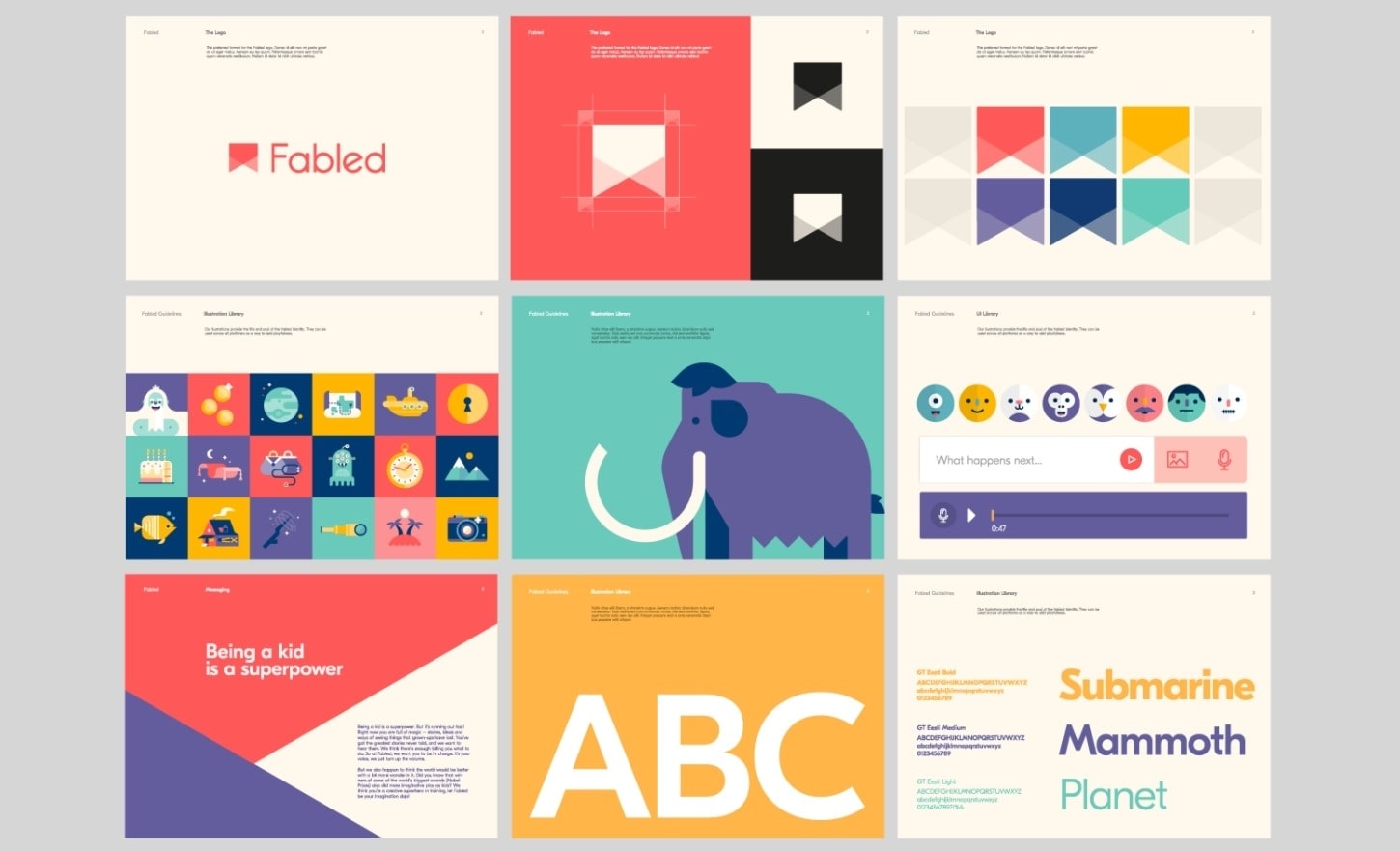
Once you’ve got your name and slogan, it í time to think about hơ you visually represent your brand, by colors and typography. This practice is handy when you start adopting your brand to many places, like websites, social media, packaging, billboards, and more.
First, let’s start with the colors. They don’t just define your brand, they also convey a feeling to customers and help you keep communicating with the audience across everything you do. You want colors that differentiate your brand from direct competitors and avoid confusing customers.
It’s important to consider how your color palette will look with black and white text, and how colored text looks over black and white background. Grab the hex codes of your palette since you will handle them for many designers later.
Next, let’s choose your font. At this point, it’s good to consider fonts you want to use on your website. Choose at least two fonts to avoid confusing your visitors: one for headings and one for textual content (this doesn’t include fonts you use in your logo).
Font Pair is a good place to browse from a wide selection of matching fonts.
5. Design the logo
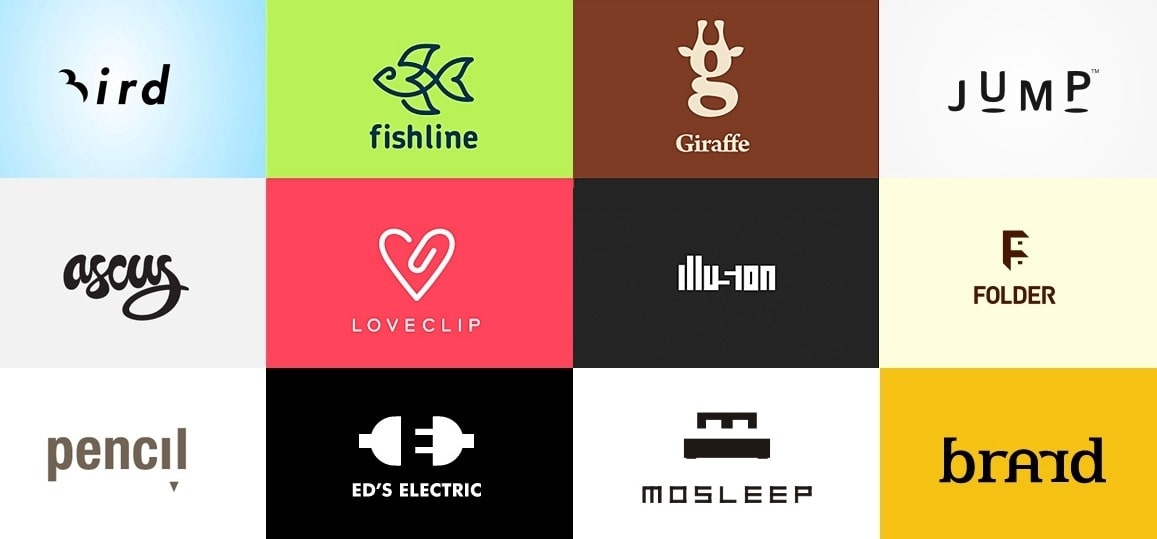
Your company logo design is probably one of the first things that come to mind when it comes to branding. And for good reason: it’s considered the face of your company and can be everywhere your brand exists.
Ideally, you’ll want a unique, recognizable, and scalable logo to work in any size (which is often overlooked).
Take a look at all the places your branding logo needs to exist, from your Shopify website to your Facebook profile picture to even the little icon you see in the current browser tab.
For example, if you have a text logo, then it’s virtually unreadable as a small icon. To make your life easier, create a square version of your logo with an icon element that remains recognizable even at a smaller size.
Unless you are an expert designer, you will probably have a hard time creating your own logo. You can outsource it for a freelancer or find a tool that can automatically create a new logo.
Read more:
How to Create a Logo for Business from Scratch?
Top 12 FREE Logo Maker Software
6. Apply the branding across your business

Across your business, you need a cohesive brand’s story. This story represents your business and the things it stands for. It sets the impression for every interaction a customer has with your brand, offline, or online.
First-time shoppers often look for a business’s purpose and mission to see if they share the same values with the brand. The visitors will come to your About Us page to learn more about who they are buying from and how the business is running. If your brand has a good brand story, share it the right way, because it can encourage the shoppers’ trust and prove that you are a legitimate company.
Not every business needs to be mission-driven, but if you have a mission, share your brand story, and tell consumers how the business started. Go back to step 2 to see the answers and how you can include your mission into your brand story.
7. Set up a branded Shopify store
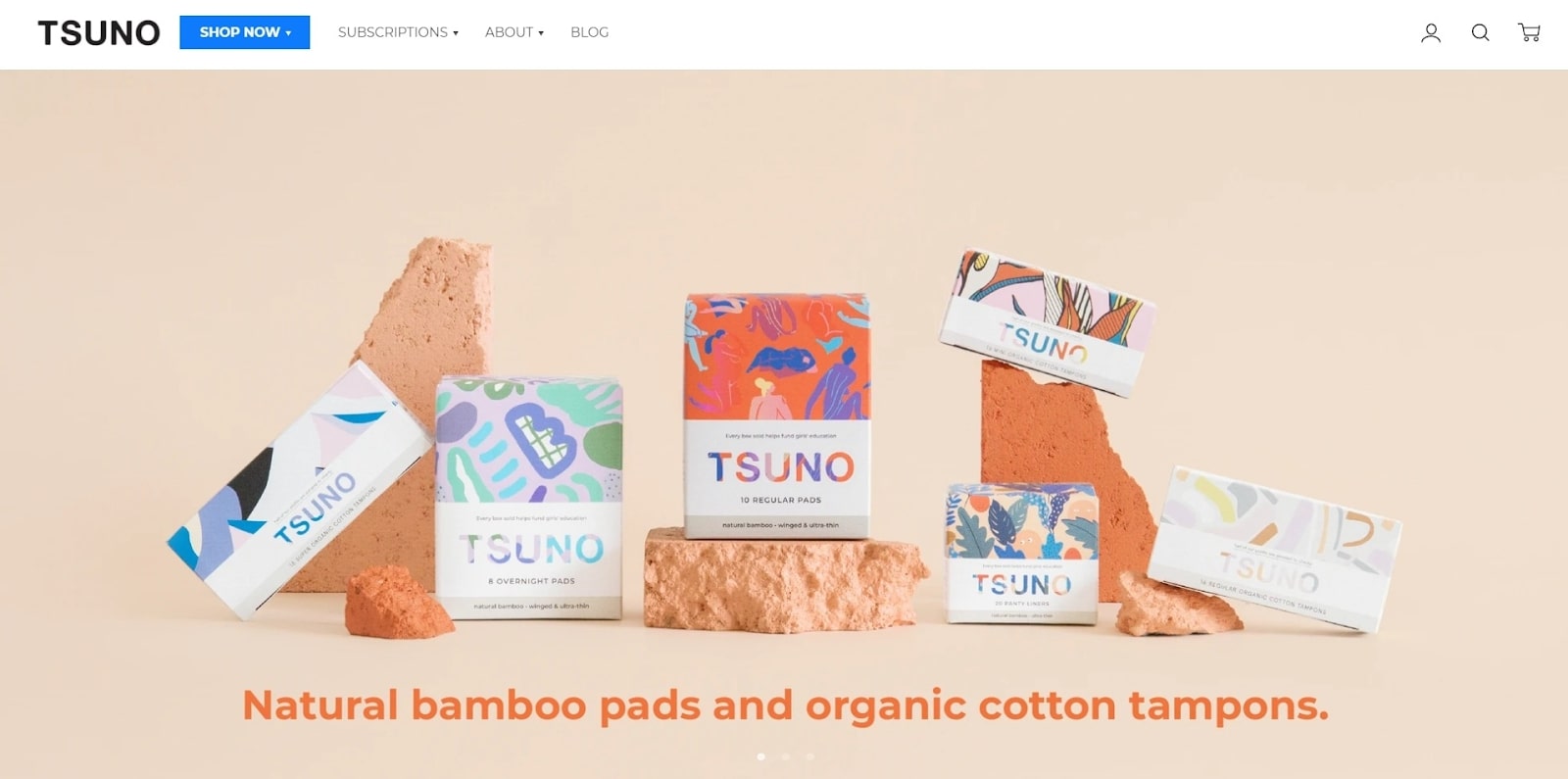
Now, you’ve got all the necessary components of a brand (if you haven’t had one already), so it is time to set up an online store on Shopify.
You have a free trial of 3 days, which gives more than enough time to build a free online store that is ready to launch. Then, you can continue to add more products and improve your store once it is live.
When you start, you will be prompted to enter your store’s name, which will become your URL and you can insert your custom domain later on. After answering a few questions, you will be taken to the inside of your Shopify account. Adding your products will be one of the first things to do, but your branding should already be in place on the website.
Editing the look and feel of your Shopify store wouldn’t be a big problem, since you can select from a wide range of themes on Shopify’s Theme Store. It is important to choose a professional theme that suits your brand and the necessary functionality. Once you’ve picked your theme, you can customize it to differentiate your online presence based on the brand guideline.
I won’t go too much into detail about setting up a Shopify store, because you can already see it here.
Building a brand doesn’t stop with your logo or slogan, or even setting up the store. Your brand needs to remain consistent wherever your customers interact with your business, from the theme you choose for the Shopify store, the marketing materials that you put out, all the way to the packaging and shipping method.
Learn more: Best FREE Slogan Generators
You will continue to shape and evolve your branded Shopify store as you expose more consumers to it and learn more about your customers when you communicate with them. The reviews and feedback from customers will be a natural process to mature your brand and should be welcomed.
Branded Shopify stores that you can learn from
With over a million independent businesses on Shopify, you can learn a lot from other stores with a variety of industries, so you can create your own vision of a branded Shopify store. Check out the Shopify stores below to see how brands are showcasing their products and services to express their personality and what they believe in.
Hiut Denim Co. with a strong branding on product quality
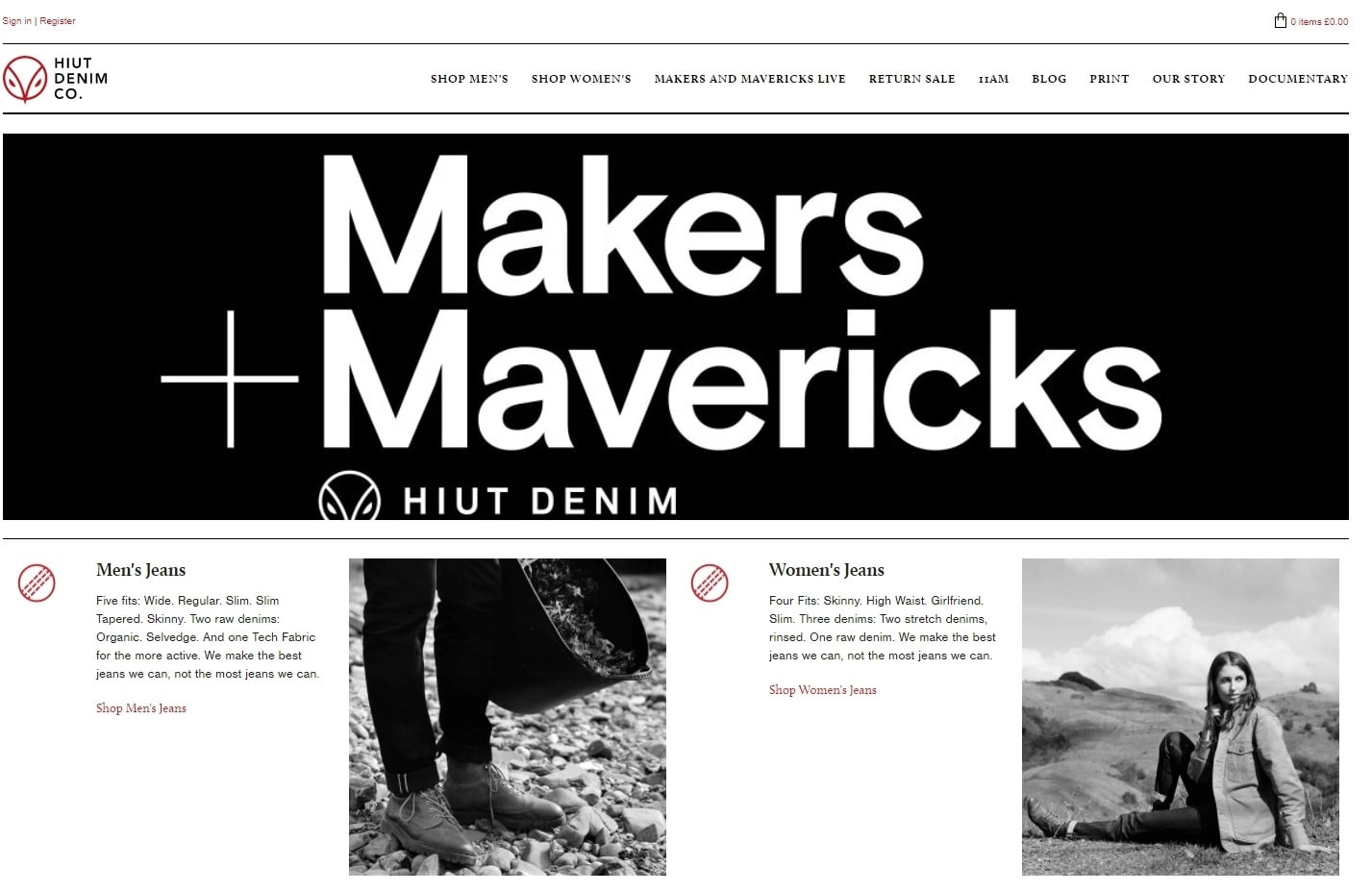
Hiut Denim started in Cardigan, Wales, a town that until 2002 was home to the largest jeans factory in the UK. Hiut Denim was created in 2011 to capitalize on the skills of the locals, demonstrating their dedication to craftsmanship and bringing manufacturing back to Cardigan. The company is dedicated to making the best jeans, focusing on detail, satisfaction, and quality.
On the website, you can immediately see a video that tells how Hiut Denim made their jeans. A simple design helps highlight the story, as well as making visitors feel the company’s dedication to jeans.
Flourist with an elegant feeling of branding
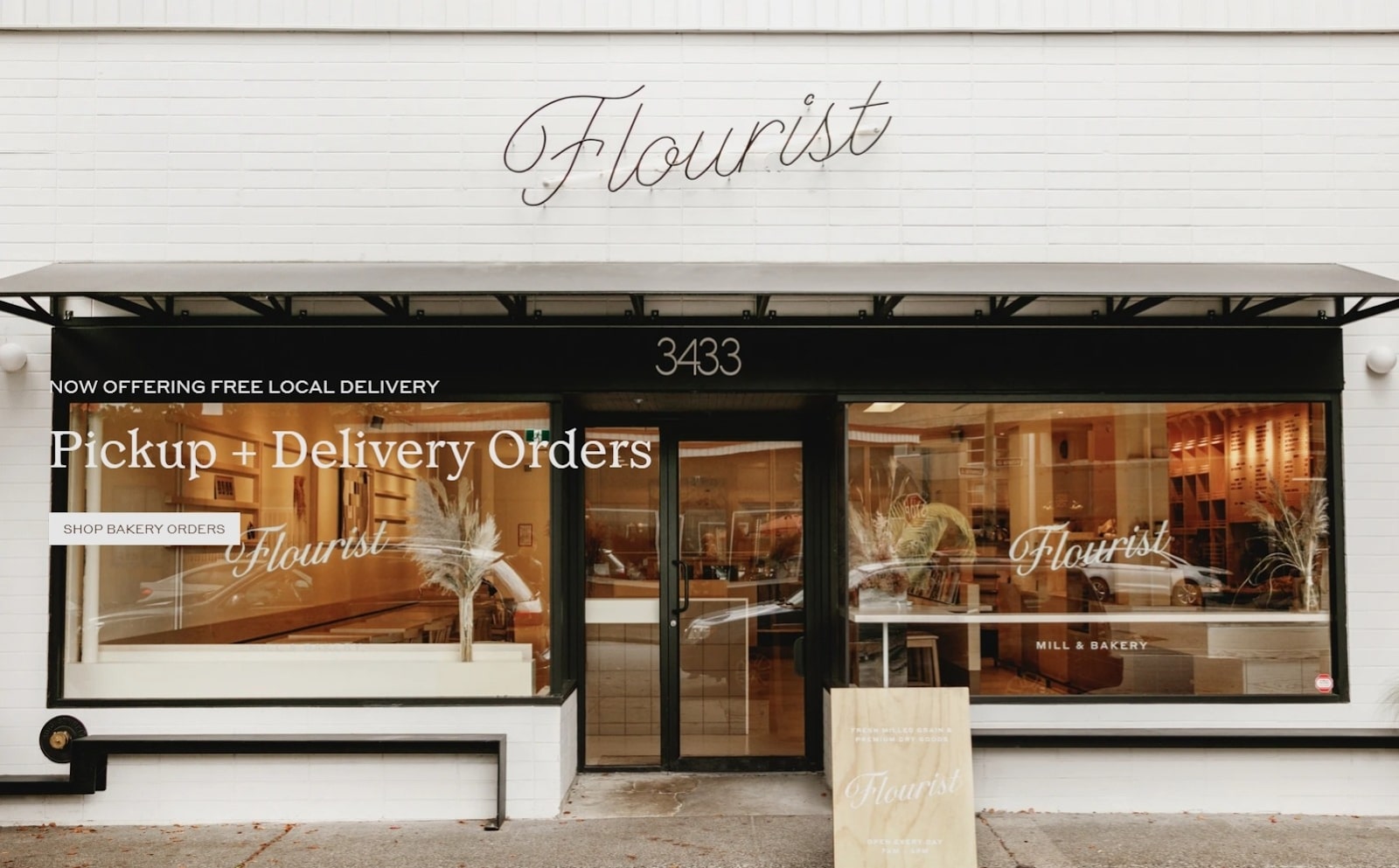
Like a charming flower shop, Flourist displays their freshly milled flour like a bouquet of blooming flowers. Flourist sells 100% traceable flours and dried goods and offers pages on its website that introduce the farmers they work with. The store is a paradise for baking enthusiasts - a place to explore the difference between freshly ground flour and legacy grains.
The website is elegant just like a flower shop, and you don’t often see that in a baking shop. This differentiates Flourist as an artist on flour and dried goods. The high-quality pictures also help the branding by showcasing the high-quality products the company offers.
Allbirds provides an eco-friendly branding

Football player Tim Brown and his friend Zoey Zwillinger are the co-founders of Allbirds, a footwear company that focuses on natural materials and sustainability. Allbirds combine comfort and consciousness, with threads made of wool and eucalyptus, a simple design, and 90% of packaging made from post-consumer recycled cardboard.
Right from the homepage, you can see the branding focus on nature and sustainability through a video at the top. The slogan is also memorable: “Made from nature, for nature”. Scroll down and you will see their goal to have no carbon footprint from the start of production. This approach really connects with customers who love the environment.
Extra tips and conclusion
Once you’ve run your store for a while, you will see much feedback from customers to evolve your brand. These will help you build a brand that consumers not only love but also can resonate with. It all comes down to how you use the language on the website, product copy, and marketing assets. This is how you become a customer-centric store and connect deeply with the customers.
Your brand also involves taking measures and steps to give your business the desired feeling. If you have stable branding, you can benefit from charging your products or services at a premium price, even if consumers can buy somewhere else. So, don’t be afraid to have a higher price than the market’s average, that may be your ticket to a better brand.
Even if your budget is low, starting a branded Shopify store is still easily achieved with steps in this guide. Share your thoughts about building your own branded Shopify store in the comments section, and I will try to answer any questions you have.
New Posts







